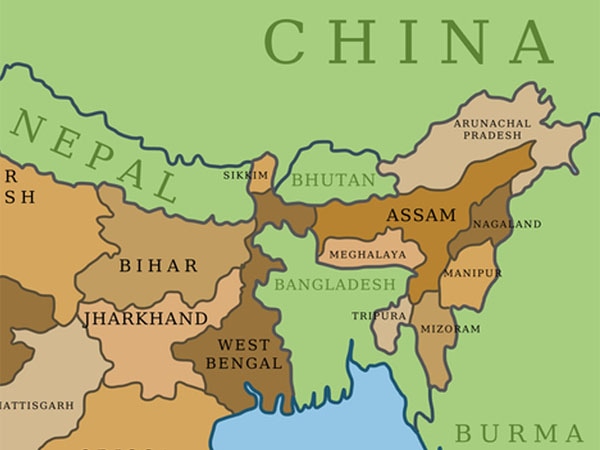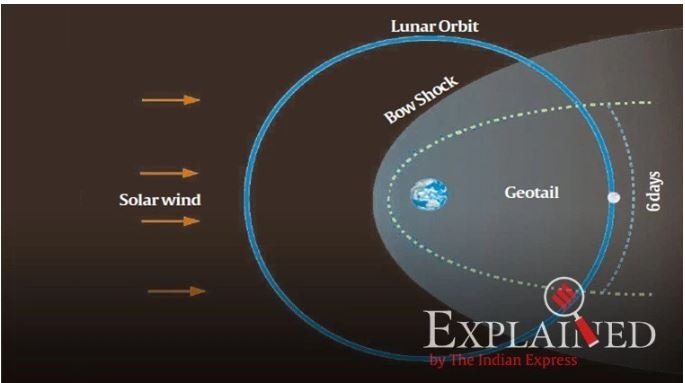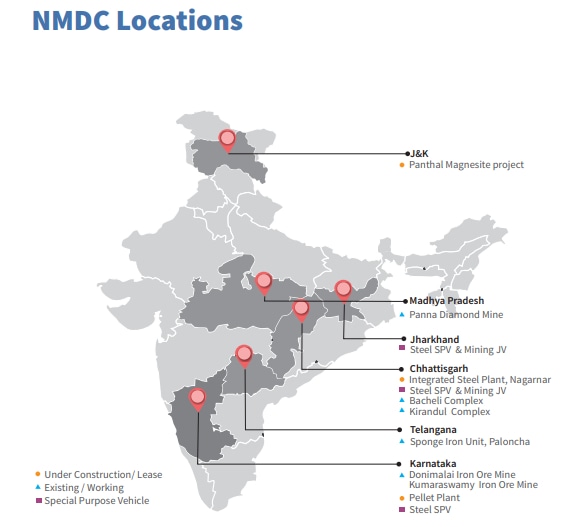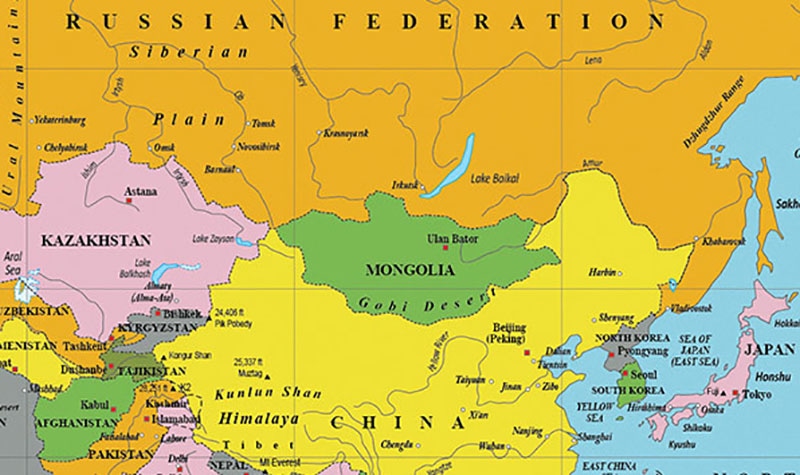International Relations
India-Bangladesh
Recently, India and Bangladesh signed seven agreements and also inaugurated three projects to deepen their partnership.
Key Highlights
- Seven Agreements include:
- The use of the Chattogram and Mongla ports in Bangladesh for movement of goods to and from India, particularly from Northeastern India.
- Use of Bangladesh’s Feni river for drinking water supply in Tripura.
- However, no progress was reported on the long pending Teesta water sharing agreement.
- Exchange of data and information to prepare a framework of interim sharing agreements for six rivers — Manu, Muhuri, Khowai and Gomati rivers of Tripura and Dharla river of Bangladesh and Dudhkumar river of West Bengal.
- Daudkanti (Bangladesh)-Sonamura (Tripura) inland water trade route to be included under Protocol of the Inland Water Transit and Trade.
- Consensus on lifting restrictions on entry and exit from land ports in India for Bangladeshi citizens travelling on valid documents.
- Implementation of the Lines of Credit (LoCs) committed by India to Bangladesh.
- Three bilateral development partnership projects include:
- Import of bulk Liquefied Petroleum Gas (LPG) from Bangladesh
- Inauguration of Vivekananda Bhaban (students hostel) at Ramakrishna Mission, Dhaka.
- Inauguration of Bangladesh-India Professional Skill Development Institute (BIPSDI) at the Institution of Diploma Engineers Bangladesh (IDEB), Khulna, Bangladesh.
- Both sides noted the progress made in finalization of a Memorandum of Understanding (MoU) on Establishment of Coastal Surveillance Radar System in Bangladesh.
- India has provided such systems to Mauritius, Seychelles, Maldives and planning one in Myanmar.
- The coastal surveillance system will pave way for Indo-Bangladesh White Shipping Agreement in future. This will be useful amid growing terror threats via seas and growing presence of China in the Bay of Bengal region.
- Both Leaders agreed to early operationalization of the Bangladesh-Bhutan-India-Nepal (BBIN) Motor Vehicles Agreement for movement of goods and passengers between the member countries who are willing and ready; or to work towards a bilateral India-Bangladesh Motor Vehicles Agreement, as appropriate.
- The leaders directed their officials to expedite establishment of twelve Border Haats which have been agreed to by both countries.
- A feasibility study for the Ganga-Padma barrage project to be conducted as part of an upgraded version of the 1996 Ganga Water Sharing treaty.
- The Bangladesh Prime Minister raised concerns over roll out of the National Register of Citizens (NRC) in Assam, an exercise carried to identify genuine Indian citizens living in Assam and weed out illegal Bangladeshis.
- The Bangladesh Prime Minister requested the Indian counterpart to use his “good relations” with the Myanmar government to facilitate the return of all the refugees (Rohingyas), while appreciating the aid India has given to refugees in Bangladesh as well as 250 homes built for them in Myanmar.
Some Facts about the Relationship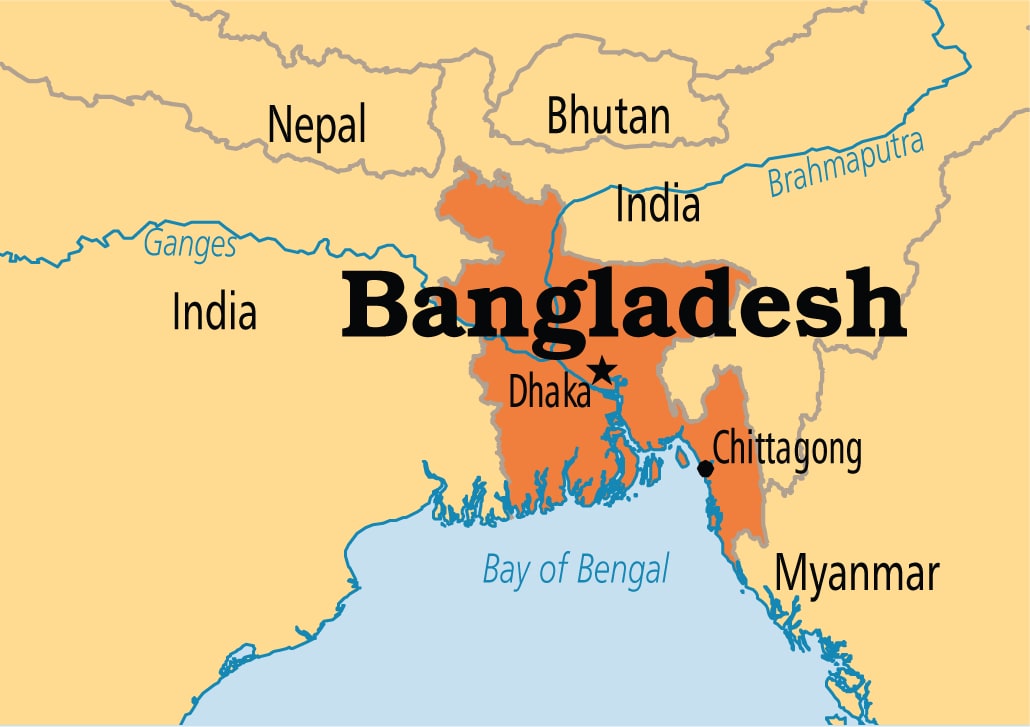
- India was one of the first countries to recognize Bangladesh and establish diplomatic relations immediately after its independence in December 1971.
- Defence Cooperation: India and Bangladesh share the historical legacy of cooperation and support during the Liberation War of 1971.Various Joint exercises of Army (Exercise Sampriti) and Navy (Exercise Milan) take place between the two countries.
- Border Management: India and Bangladesh share 4096.7 km. of border, which is the longest land boundary that India shares with any of its neighbours. The India-Bangladesh Land Boundary Agreement (LBA) came into force following the exchange of instruments of ratification in June 2015.
- Cooperation over Rivers: India and Bangladesh share 54 common rivers. A bilateral Joint Rivers Commission (JRC) is working since June 1972 to maintain liaison between the two countries to maximize benefits from common river systems.
- Economic Relations: Bangladesh is India’s biggest trade partner in South Asia. India’s exports to Bangladesh for financial year 2018-19 (April-March) stood at US $ 9.21 bn and imports from Bangladesh for the same period stood at US $ 1.22 bn.
- Cooperation in Power Sector: This has become one of the hallmarks of India- Bangladesh relations. Bangladesh is currently importing 1160 MW of power from India.
Indian Economy
Strategic Disinvestment
The Department of Investment and Public Asset Management (DIPAM) under the Ministry of Finance has been made the nodal department for the strategic stake sale in the Public Sector Undertakings (PSUs).
- Till now, PSUs for strategic sale were identified by NITI Aayog. From now, DIPAM and NITI Aayog will jointly identify PSUs for strategic disinvestment.
- Also, DIPAM secretary would now co-chair the inter-ministerial group on disinvestment, along with the secretary of administrative ministries concerned.
- This has done with a view to streamlining and speeding up the process, reducing the role of administrative ministries which often used to place hurdles in the path of major stake sales.
Department of Investment and Public Asset Management
- The Department of Disinvestment was one of the Departments under the Ministry of Finance. It was renamed as Department of Investment and Public Asset Management (DIPAM) from 14th April, 2016.
- The mandate of the Department is as follows:
- All matters relating to the management of Central Government investments in equity including disinvestment of equity in Central Public Sector Undertakings.
- All matters relating to the sale of Central Government equity through offer for sale or private placement or any other mode in the erstwhile Central Public Sector Undertakings.
Strategic Disinvestment
- Disinvestment means the dilution of stake of the Government in a public enterprise.
- Strategic disinvestment is transferring the ownership and control of a public sector entity to some other entity (mostly to a private sector entity).
- Unlike the simple disinvestment, strategic sale implies some sort of privatization.
- According to the government, strategic disinvestment would imply the sale of a substantial portion of the Government shareholding of a central public sector enterprises (CPSE) of upto 50%, or such higher percentage as the competent authority may determine, along with transfer of management control.
- Strategic disinvestment in India has been guided by the basic economic principle that the government should not be in the business to engage itself in manufacturing/producing goods and services in sectors where competitive markets have come of age, and economic potential of such entities may be better discovered in the hands of the strategic investors due to various factors, e.g. infusion of capital, technology up-gradation and efficient management practices etc.
NITI Aayog
- The National Institution for Transforming India, also called NITI Aayog, was formed via a resolution of the Union Cabinet on 1st January 2015.
- The Government of India constituted the NITI Aayog to replace the Planning Commission instituted in 1950.
- It is the premier policy ‘Think Tank’ of the Government of India, providing both directional and policy inputs.
- While designing strategic and long term policies and programmes for the Government of India, NITI Aayog also provides relevant technical advice to the Centre and States.
- The Governing Council of NITI, with the Prime Minister as its Chairman, comprises Chief Ministers of all States and Lt. Governors of Union Territories (UTs).
Agriculture
World Cotton Day
The World Trade Organisation (WTO) is hosting the event at the request of Cotton-4 (Benin, Burkina Faso, Chad and Mali) to celebrate their official application for recognition of October 7 as World Cotton Day by the United Nations.
- The World Trade Organisation (WTO) is organizing World Cotton Day event in collaboration with the United Nations Food and Agriculture Organization (FAO), the United Nations Conference on Trade and Development (UNCTAD), the International Trade Centre (ITC) and the International Cotton Advisory Committee (ICAC).
Objective
- To give exposure and recognition to cotton and all its stakeholders in production, transformation and trade,
- To engage donors and beneficiaries and strengthen development assistance for cotton,
- To seek new collaborations with the private sector and investors for the cotton related industries and production in developing countries and promote technological advances, as well as further research and development on cotton.
Cotton
- Cotton is a kharif crop which requires 6 to 8 months to mature. Its time of sowing and harvesting differs in different parts of the country depending upon the climatic conditions.
- Cotton is the crop of tropical and sub-tropical areas and requires uniformly high temperature varying between 21°C and 30°C. The growth of cotton is retarded when the temperature falls below 20°C.
- Cotton is a drought – resistant crop ideal for arid climates and requires an average annual rainfall of 50- 100 cm.
- It requires at least 210 frost free days in a year.
- It occupies just 2.1 % of the world’s arable land, yet it meets 27% of the world’s textiles need. In addition to its fibre used in textiles and apparel, food products are also derived from cotton like edible oil and animal feed from the seed.
- India is the second largest producer of cotton in the world after China.
- Between 2011 and 2018, India implemented a Cotton Technical Assistance Programme (Cotton TAP-I) for seven African countries namely Benin, Burkina Faso, Mali and Chad and also Uganda, Malawi and Nigeria.
- The technical assistance focused on improving the competitiveness of the cotton and cotton-based textiles and apparel industry in these countries through a series of interventions which had significant outcomes leading to a demand for a follow on project.
Cotton Corporation of India
- CCI was established on 31st July 1970 under the administrative control of Ministry of Textiles, Government of India as a Public Sector Undertaking under the Companies Act 1956.
- CCI is having pan India presence through headquarters at Navi Mumbai (Maharashtra) to safeguard the economic interest of cotton farmers in all the cotton growing regions and to ensure smooth supply of good quality cotton to the textile industry in India.
- The major role of the CCI is to undertake price support operations, whenever the market prices of cotton falls below the minimum support prices (MSP).
Important Facts For Prelims
World Habitat Day
The United Nations has designated the first Monday of October every year as World Habitat Day.
- The theme for World Habitat Day 2019 is “Frontier Technologies as an Innovative Tool to Transform Waste to Wealth”.
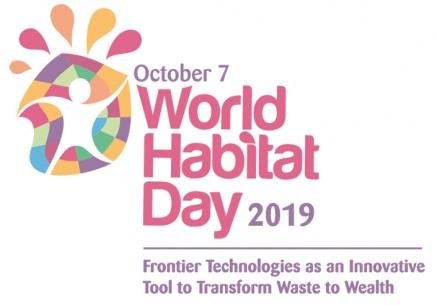
- Frontier technologies refers to automation, robotics, electric vehicles, renewable energy technologies, biotechnologies, and artificial intelligence which can transform social, economic and environmental spheres.
- The focus of this year’s theme to promote the contribution of innovative technologies to sustainable waste management to achieve Sustainable Development Goal 11.
- Sustainable Development Goal 11 aims to make cities more inclusive, safe, resilient and sustainable.
- The event focuses on the state of human settlements and people’s right to sufficient shelter.
- It also aims to remind people that they are responsible for the habitat of future generations.
- The global observation of the World Habitat Day 2019 will be hosted by the Government of Mexico in Mexico City on 7 October this year.
- World Habitat Day was first celebrated in 1986 with the theme “Shelter is My Right”.
- Nairobi was the host city for the observance that year.
Important Facts For Prelims
MOSAiC: An Arctic Observatory
The Multidisciplinary Drifting Observatory for the Study of Arctic Climate (MOSAiC) is an international research expedition to study the physical, chemical, and biological processes that coupled the Arctic atmosphere, sea ice, ocean, and ecosystem.
- MOSAiC is the first year-round expedition into the central Arctic exploring the Arctic climate system.
- During the year-round operation of research, the distributed regional network of observational sites will be set up on the sea ice surrounding the ship icebreaker RV Polarstern.
- The icebreaker RV Polarstern is a German Research Vessel which is mainly used for research in the Arctic and Antarctica.
- The results of MOSAiC will contribute to enhance understanding of the regional and global consequences of Arctic climate change and sea-ice loss and improve weather and climate predictions.
- The project has been designed by an international consortium of leading polar research institutions, under the umbrella of the International Arctic Science Committee (IASC).
International Arctic Science Committee
- The International Arctic Science Committee (IASC) is a non-governmental, international scientific organization
- IASC promotes and supports leading-edge interdisciplinary research in order to foster a greater scientific understanding of the Arctic region and its role in the Earth system.
Important Facts For Prelims
Geotail
Recently, an instrument on Chandrayaan-2 named CLASS (Chandrayaan-2 Large Area Soft X-ray Spectrometer) has detected charged particles present on the moon soil during the orbiter’s passage through the “Geotail”.
- According to ISRO, the intensity of these charged particles (believed to be mostly electrons) changed as much as ten times the levels outside the Geotail.
- The detection of these charged particles on the surface of the moon can help understand the complex interaction of these particles with the magnetic field.
- It will also help to measure the fluxes, energy spectra, and charge types of charged particles bombarding the lunar surface and to investigate the interaction of these particles and other forms of radiation with the lunar surface.
- The Geotail region exists as a result of the interactions between the Sun and Earth.
- The Sun emits the solar wind, which is a continuous stream of charged particles.
- These particles are embedded in the extended magnetic field of the Sun.
- Since the Earth has a magnetic field, it obstructs the solar wind plasma.
- This interaction results in the formation of a magnetic envelope around Earth.
- On the Earth side facing the Sun, the envelope is compressed into a region that is approximately three to four times the Earth's radius.
- On the opposite side, the envelope is stretched into a long tail, which extends beyond the orbit of the Moon called the Geotail.
- Once every 29 days, the Moon traverses the Geotail for about six days.
- The Geotail region allows the best scientific observations.
Chandrayaan-2 Large Area Soft X-ray Spectrometer (CLASS)
- The objective of CLASS is to map the abundance of major rock-forming elements on the lunar surface using the technique of X-ray fluorescence during solar flare events.
- The solar flare provides a rich source of X-rays to illuminate the surface.
- Secondary X-ray emission resulting from this can be detected by CLASS to directly detect the presence of key elements like Sodium (Na), Calcium (Ca), Aluminium (Al), Iron (Fe), etc. on the lunar surface.
Important Facts For Prelims
Donimalai : Iron Mining
National Mineral Development Corporation (NMDC) is set to restart mining at Donimalai in Bellari district of Karnataka.
- The iron ore supply is bound to increase and bring down prices particularly when many sponge iron and pellet manufacturers in the State have shut operations due to rise in cost and weak demand.
- NMDC, which owned Donimalai mine since 1968, suspended operations in November 2018 after the Karnataka government sought 80% premium on iron mined to renew its lease for another 20 years.
National Mineral Development Corporation
- Incorporated in 1958 as a Government of India fully owned public enterprise, NMDC is under the administrative control of the Ministry of Steel, Government of India.
- Since inception involved in the exploration of a wide range of minerals including iron ore, copper, rock phosphate, limestone, dolomite, gypsum, bentonite, magnesite, diamond, tin, tungsten, graphite, beach sands etc.
- NMDC is India's single largest iron ore producer, presently producing about 35 million tonnes of iron ore.
- The company has been categorized by the Department of Public Enterprises as "Navratna" Public Sector Enterprise in 2008.
- Its corporate office is located in Hyderabad.
Important Facts For Prelims
Nomadic Elephant-14
The 14th edition of India-Mongolia joint military exercise is being held from 5th to 18th October at Bakloh, Himachal Pradesh.
- The Mongolian Army is being represented by officers and troops of the elite 084 Airborne Special Task Battalion while Indian Army is being represented by a battalion of the RAJPUTANA RIFLES Regiment.
- It aimed at training troops in counter insurgency & counter terrorism operations under United Nations mandate.
- The joint exercise will enhance defence co-operation and military relations between the two nations. It is an ideal platform for the armies of both the nations to share their experiences & best practices and gain mutually during the joint training.

